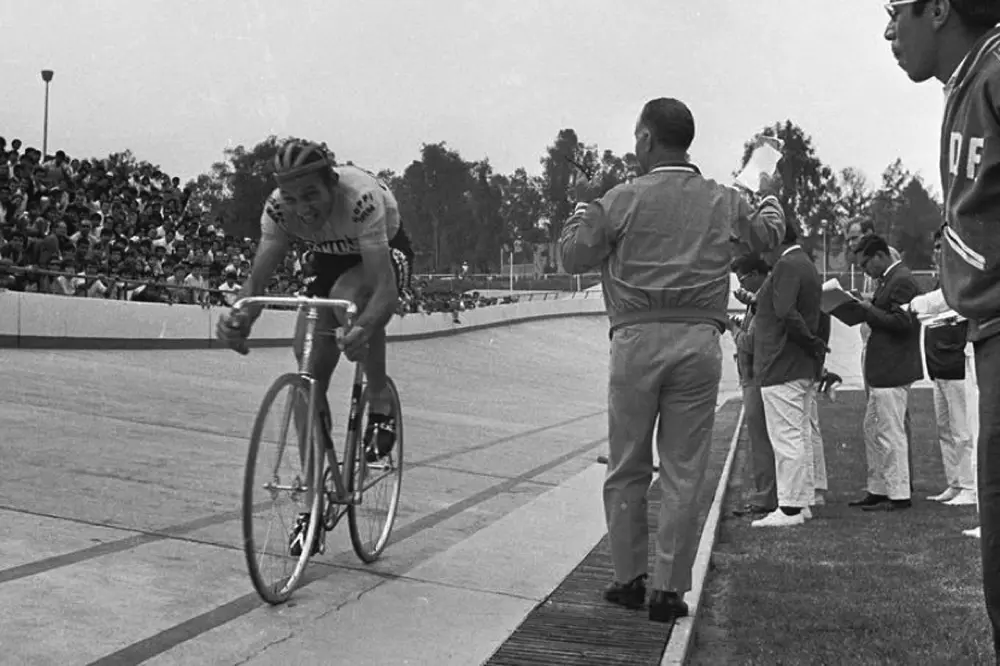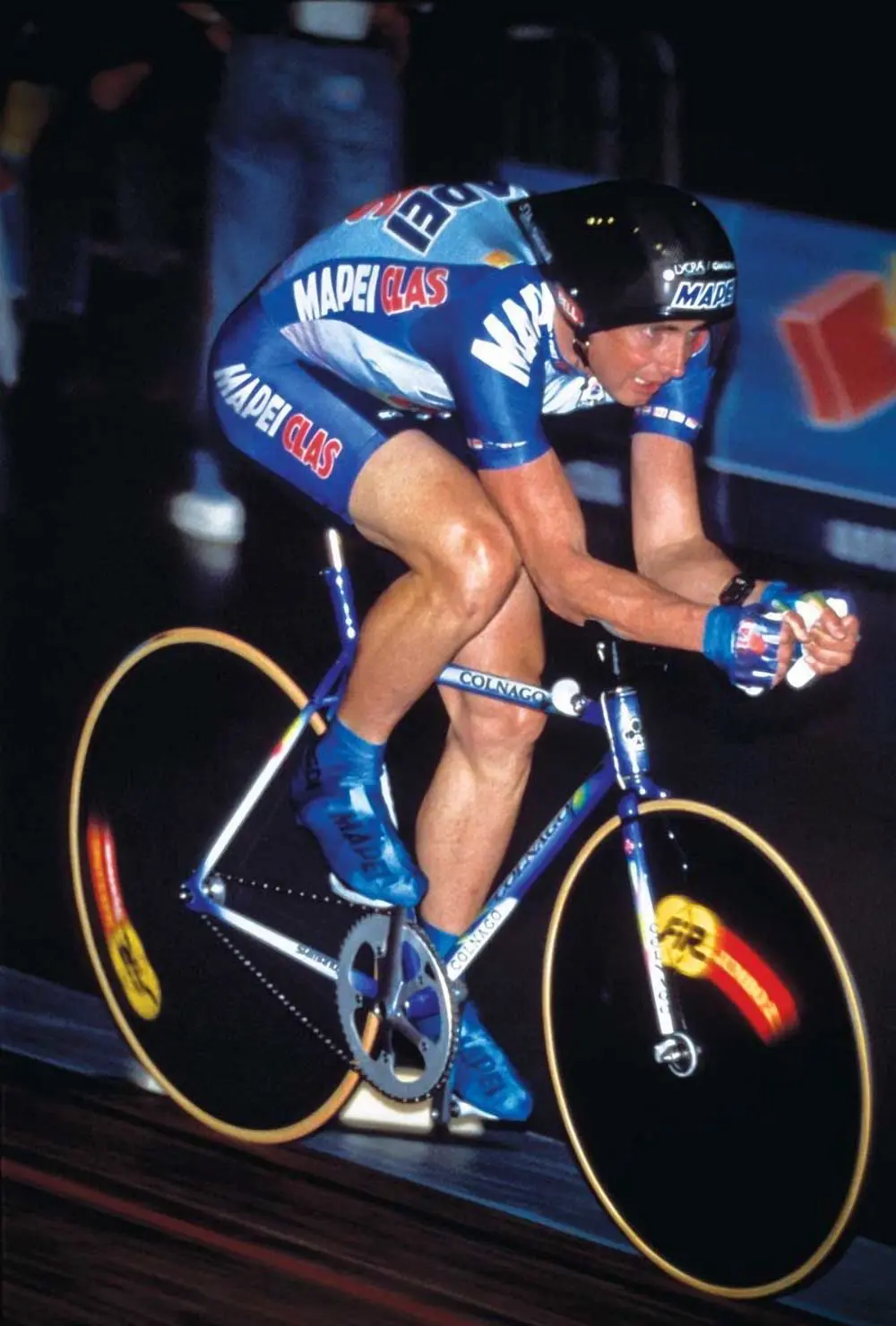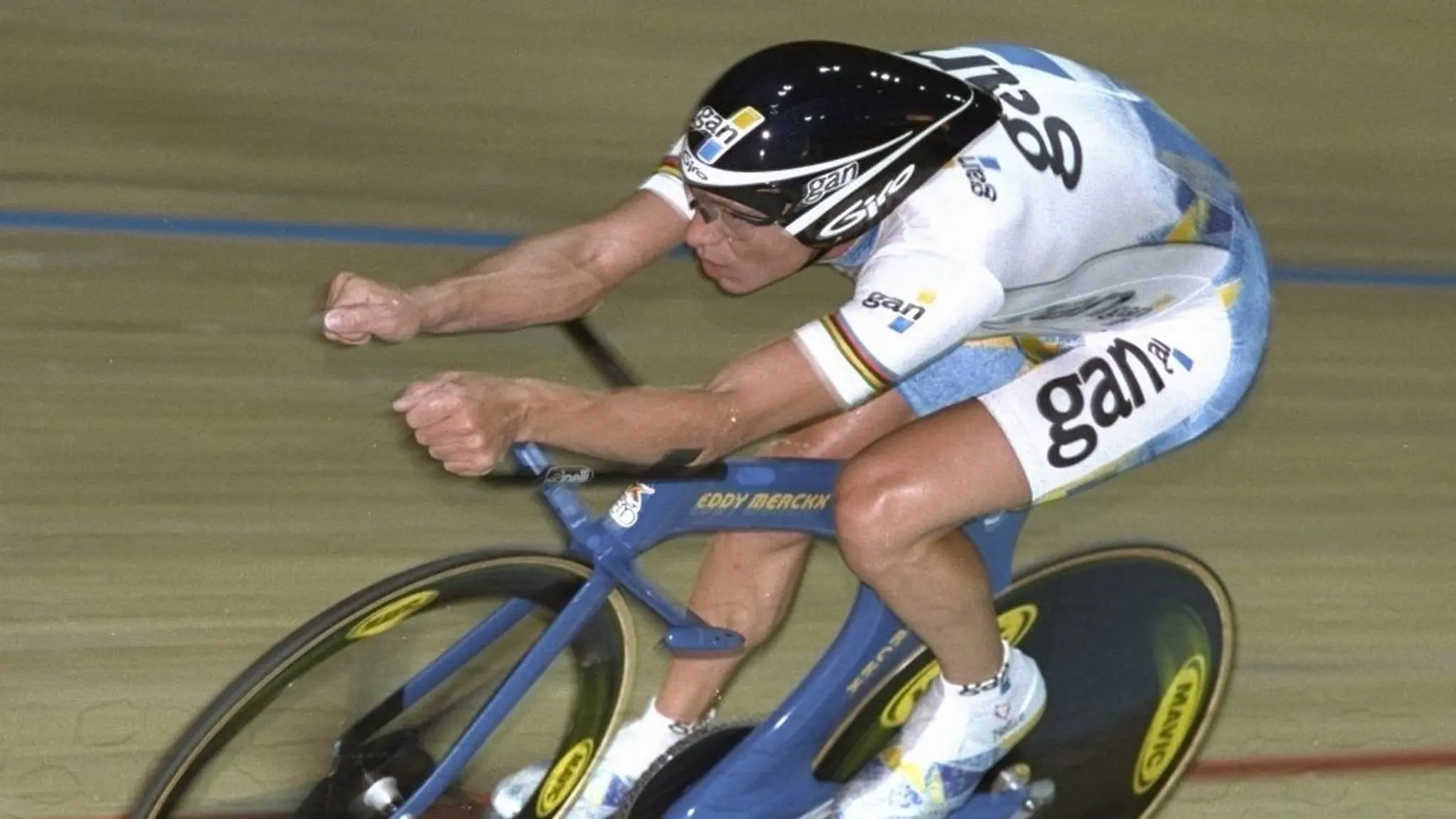Jorgen Leith got it right with the title of his documentary film about Ole Ritter’s unsuccessful attempt in 1974, ‘The Impossible Hour.’
Dan Bigham’s brilliant ride to raise the bar to 55.548 metres on the Grenchen Velodrome in Switzerland recently had me thinking that it would be good to look at the ‘defining moments’ in the progression of the Hour in modern times and try to clear up the rather confusing different incarnations of the record.
But no sooner had Dan’s clinchers cooled down than that big gentleman, ‘Pippo’ Ganna took the gold standard even higher with a 56.792 kilometre ride on the Grenchen boards.
CHAPEAU!
But nonetheless, here goes with our ‘potted history’ of the modern Hour.
* * *
1968, Ole Ritter – 48.653
The first Hour of the ‘modern era;’ the first at altitude to take advantage of the ‘thin’ air, albeit Ritter says that the main reason for choosing Mexico as the venue was that the world’s press were there in anticipation of the Olympic Games and would be looking to fill column inches.

The super stylish Dane would return to Mexico in 1974 to try to reclaim the record – but it was not to be, hence the title of Leth’s wonderful documentary.
* * *
1972, Eddy Merckx – 49.432
The great Belgian, riding a super light gem of a Colnago ignored his schedule and went off like a rocket en route his record ride, breaking the now defunct 10 and 20 kilometre records along the way but suffering badly in the closing laps.
There’s little doubt that had he managed his pace better he’d have come very close to the magical 50 kilometres barrier.
* * *
1984, Francesco Moser – 50.808
The ‘Campionissimo’ in the autumn of his career added a kilometre and more to Merckx’s record; however there are caveats, like the double disc wheels he rode, allegedly with internal oil filled tubes containing ball bearings at the hub end then spreading out towards the rim as he got under way aiding his acceleration; then there was the plastic film added to the track to reduce friction and not least, Sen. Moser’s choice of ‘preparatore,’ a certain Francesco Conconi.
Just four days later, making a nonsense of Merckx’s statement that Hour was a, ‘once in a lifetime effort’ the Italian took the record up to 51.151 kilometres where it would remain until a skinny, eccentric Scotsman came along.
But in 2014 this became the first, ‘Best Human Effort Hour’ when the UCI revised the status of the record, more of which later.
* * *
1993, Graeme Obree – 51.596
‘L’Incroyable Mister Obree’ L’Equipe said, here in Scotland we’d seen what he could do but he was unknown on the world stage until he consigned Moser’s record to the ‘previous record holder’ column.
He’d tried and failed to grab the record the day before on the boards of Hamar in Norway but fuelled by cornflakes and marmalade sandwiches he lined up on that bizarre machine and had the world’s eyes popping.
Graeme was way ahead of his time on aerodynamics; his shoulders on the bars position reduced the usual cyclist oval shape to a ‘T’ profile with knees practically touching and a super-narrow ‘Q’ factor thanks to that famous washing machine bearing in his bottom bracket.
* * *
1993, Chris Boardman – 52.27
It was hard to take in for us; Merckx, Moser then two ‘Brits’ squabbling over the Hour in the space of a week!

Englishman Boardman was none too pleased with Scot, Obree beating him to the punch and taking the record just six days before the man from The Wirral’s own attempt on the Bordeaux boards during the Tour de France.
Using his successful record ride as a ‘shop window’ Boardman grabbed himself a contract with GAN.
The super-meticulous Boardman was in direct contrast to the madcap Obree and found it hard to get his head round Obree’s approach.
Obree, Boardman, then Obree again at 52.713, and Indurain’s 53.040 successful subsequent attempts would all fall within the ‘Best Human Effort Hour’ after 2014.
* * *
1994, Toni Rominger – 53.832
The Swiss ‘chronoman’ and Grand Tour star took the record on the Bordeaux boards on a steel Colnago with ‘scaffold clamp’ tri-bars to make Dan Bigham weep.

‘Swiss Toni’ then ‘did a Moser’ and upped the record to 55.291 kilometres just days later.
Did I mention that Toni had Conconi’s protégé, Ferrari track side?
Again, these records would fall into the ‘Best Human Powered Effort Hour’ in 2014.
* * *
1996, Chris Boardman – 56.375
Using the ‘Superman’ position invented by bitter rival Obree, Boardman shelved the record with a huge 56 K effort on the Manchester boards but the position was deemed illegal by the UCI albeit the ride but remained as ‘Best Human Powered Effort Hour’ until ‘Pippo’ tidied everything up.

2014. This is where it gets a little complicated, for a period, the UCI had an ‘Athlete’s Hour’ which had to be ridden on a ‘conventional’ track machine a la Eddy and the bike within strict dimensional parameters.
Boardman updated Merckx’s record of 49.432 K to 49.441 K under these conditions in 2000 at Manchester before big Czech ‘chronoman’ and Peace Race winner, Ondrej Sosenka updated that to 49.7 K in Moscow in 2005.
In 2014 the UCI decided to rejuvenate the record and went back to ‘Year Zero’ and the Merckx/Boardman/Sosenka rides as the yard stick, with the likes of Moser, Obree et al filed under ‘Best Human Powered Effort.’
The new dictate was that machines which were being ridden in current 2014 individual and team pursuits could be used for the record attempts, to the usual strict dimensional control.
However, it should be noted that Rominger’s bikes fell within those parameters except for one factor, his front wheel was 25mm smaller than the rear – the 2014 regulations demanded wheels of the same size.
* * *
2014, Jens Voigt – 51.115
In the twilight of his career, big German, Jens Voigt was quick to see the PR potential of this fresh approach to the Hour and on the Grenchen, Switzerland boards was first to start the new era of the Hour.
Successful bids would then follow from Matthias Brandle 51.852 K at Aigle, Rohan Dennis 52.491 K at Grenchen and Alex Dowsett 52.937 K at Manchester before a certain Knight of the Realm came along.
* * *
2015, Bradley Wiggins – 54.526
In front of an adoring crowd on his home, London track the Tour de France winner looked to have shelved the record.
* * *
2019, Victor Campenaerts – 55.089
The Belgian ‘chronoman,’ a former National and European Time Trial Champion and Worlds Time Trial medallist raised the bar, literally – travelling all the way to Aguascalientes in Mexico and an altitude of 1800 metres to revise Wiggo’s distance.
* * *
2022, Dan Bigham – 55.548
On the boards of Grenchen, Switzerland, British ‘aero guru,’ Dan Bigham added two laps to Campenaerts distance and in the process exceeded Rominger’s 55.291 K to leave only Boardman’s ‘Superman’ 56.375 as the last ‘Human Powered Effort’ ahead of the ‘UCI Hour’ – however, as we said, Pippo has tidied everything up with that 56.792 ride.
It gives us great satisfaction to tell you that we have an interview with Dan about his record ride.
BUT we must now bill Dan as ‘ex-world Hour record holder,’ thanks to that Italian fella and those 56.792 kilometres.



